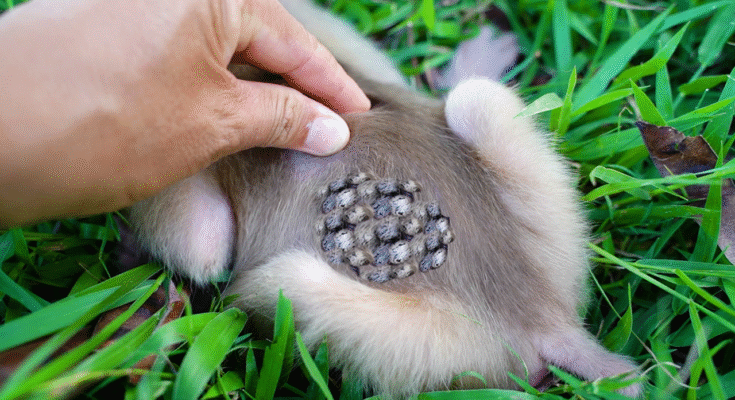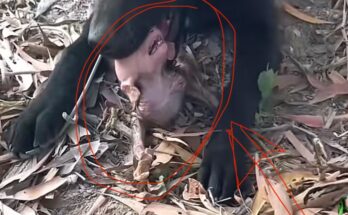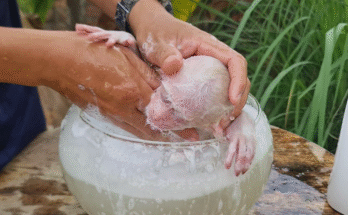Caring for infant primates in a medical or rehabilitation facility requires more than feeding and monitoring growth. One often-overlooked concern is the threat of parasites such as fleas. While tiny, fleas can cause serious health complications in vulnerable animals — from anemia and skin irritation to transmitting other diseases. In a hospital setting, where animals are closely monitored, prevention and rapid response are essential.
Why Flea Protection Matters
Baby monkeys have underdeveloped immune systems and delicate skin. A flea infestation can quickly overwhelm their small bodies, leading to discomfort, infection, or dangerous blood loss. In addition, parasites can spread to other animals and even to staff, disrupting the safe, sterile environment of a hospital.
Step-by-Step Protection Protocol
1. Detect Early
Routine examinations should include careful checks of the monkey’s fur. Nurses and caregivers are trained to look for flea dirt (tiny black specks), bite marks, or the insects themselves. Early detection allows for swift intervention before the infestation spreads.
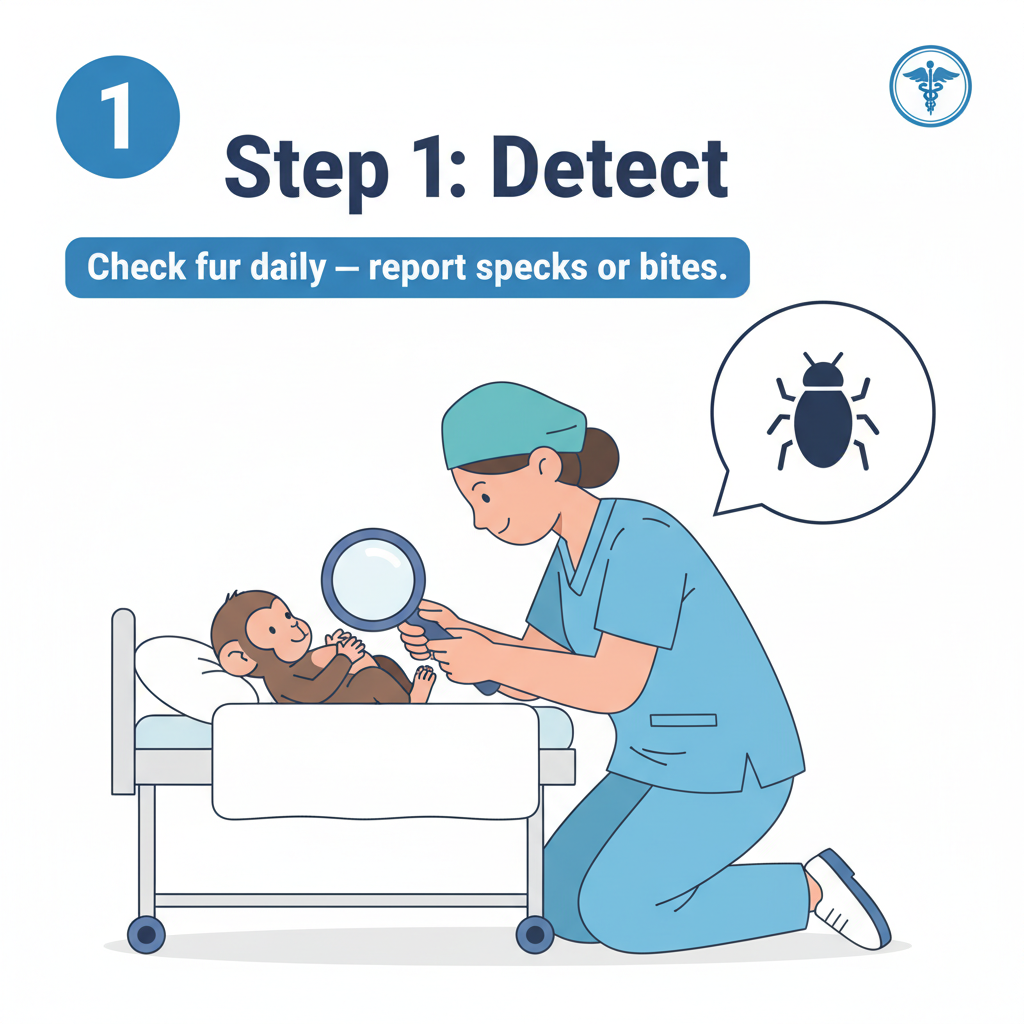
2. Isolate and Protect
If fleas are suspected, the young monkey should be placed in a clean isolation unit. This prevents parasites from moving to other patients. At the same time, staff put on gloves and masks to ensure personal protection.
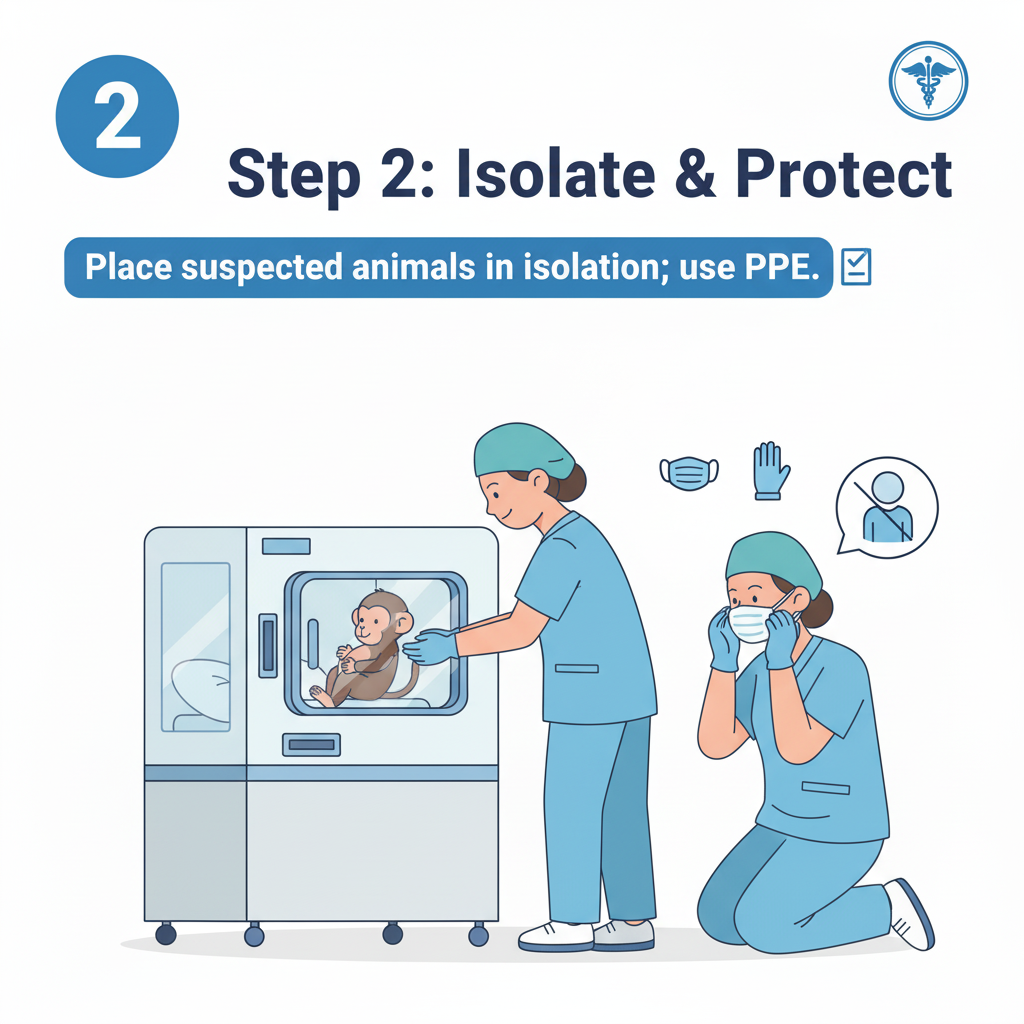
3. Veterinary Assessment
A veterinarian examines the infant carefully and creates a treatment plan. Importantly, human over-the-counter flea products should never be used on primates, as they can be toxic. Only species-appropriate medications prescribed by a vet are safe.
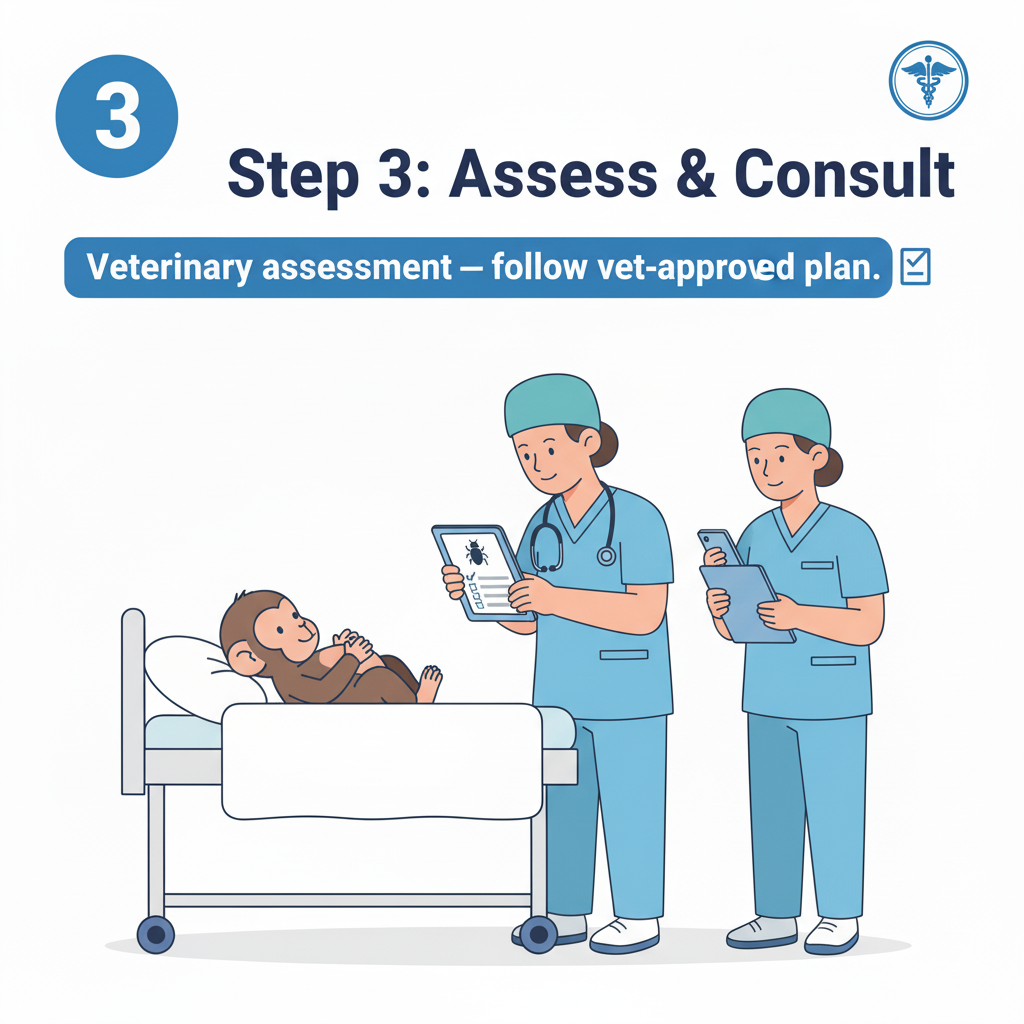
4. Treat and Clean
Treatment usually involves topical solutions or specially approved medications. Alongside this, thorough environmental cleaning is crucial — bedding is laundered, surfaces are disinfected, and vacuuming removes stray fleas and eggs.
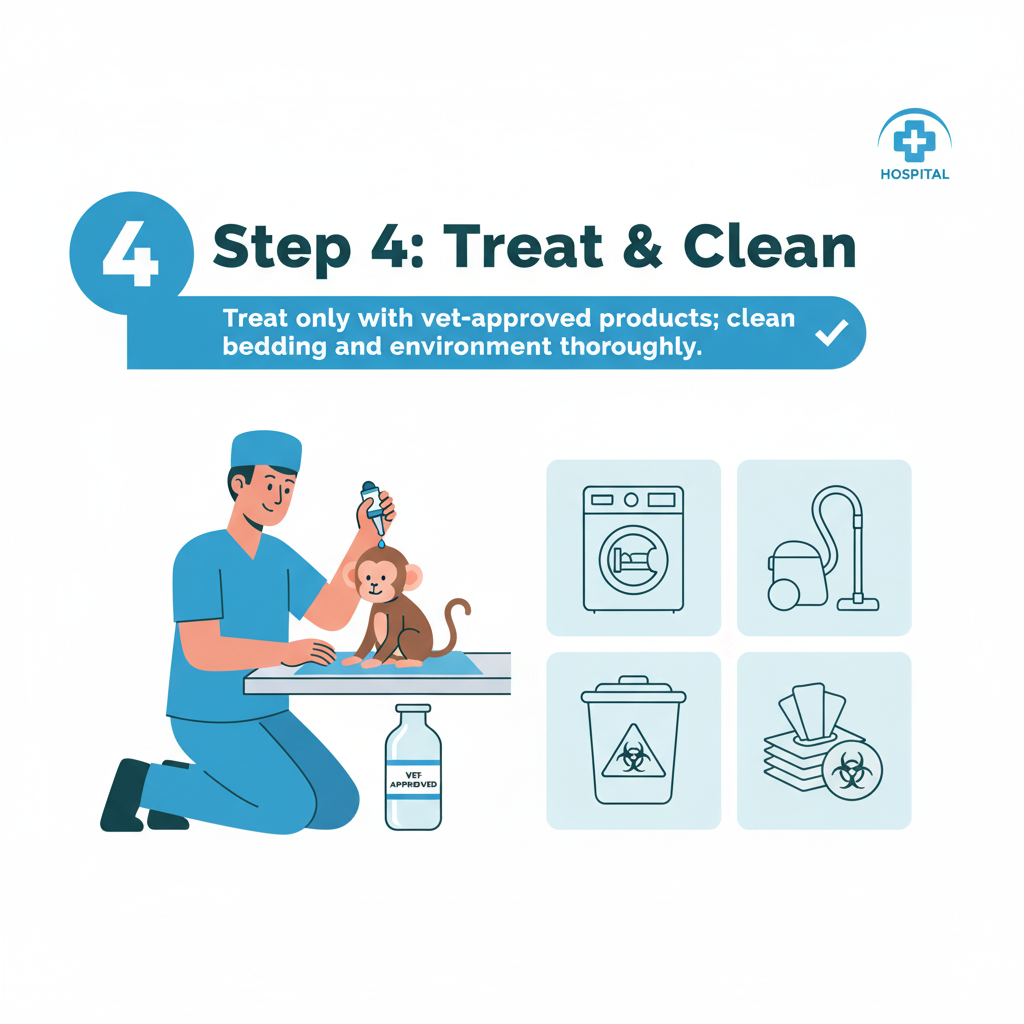
5. Prevent and Monitor
Prevention is ongoing. Daily checks, scheduled pest-control routines, and staff training ensure that fleas do not return. Detailed health records help track progress, and the monkey’s comfort and recovery are carefully monitored.
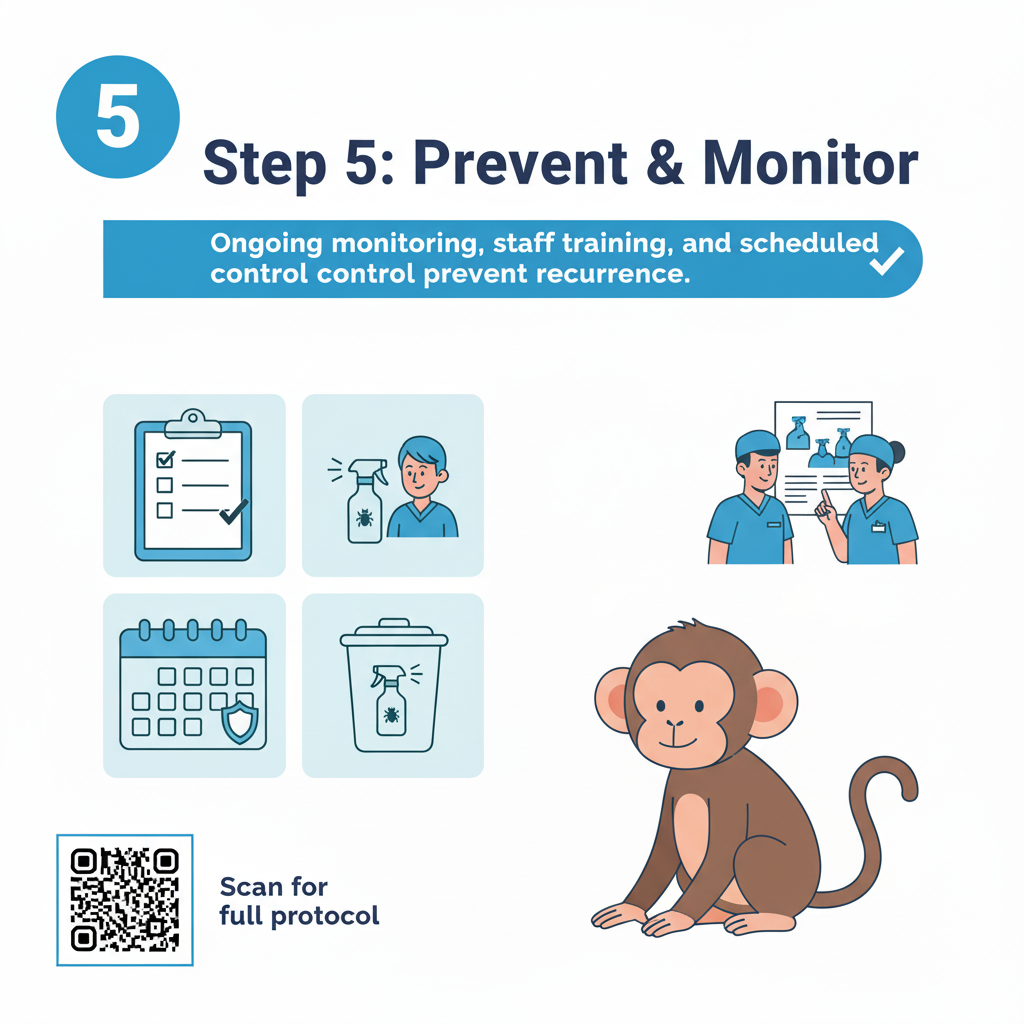
Creating a Safe Recovery Environment
The goal is not only to treat but also to ensure the baby monkey thrives in a stress-free, hygienic environment. Hospitals that handle wildlife or primates must balance medical care with preventive strategies that protect both animals and humans.
